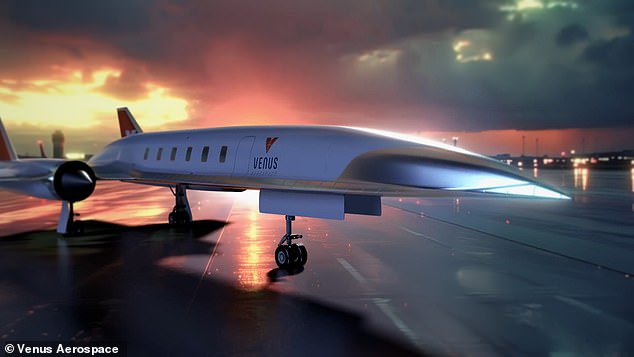
2030 Supersonic Jet to Slash New York-London Flight Time to Under 60 Minutes
Supersonic Travel Breakthrough: Texas Startup Tests Revolutionary Engine for 55-Minute NY-Paris Flights
A Texas-based startup, Venus Aerospace, has taken a major leap toward reviving supersonic air travel with the first successful atmospheric test of a groundbreaking engine. The technology could one day slash flight times between New York and Paris to just 55 minutes—faster than the retired Concorde and far beyond today’s commercial jets.
Revolutionary Engine Tested
On May 14, Venus Aerospace launched a small rocket equipped with a rotating detonation rocket engine (RDRE) from Spaceport America, New Mexico. Unlike conventional engines that rely on steady combustion, the RDRE generates thrust using controlled spinning explosions—a design theorized since the 1980s but never successfully flown until now.
“This is the moment we’ve worked toward for five years,” said CEO Sassie Duggleby. RDREs are lighter, more efficient, and compact, making them ideal for hypersonic flight. The test confirmed the engine’s real-world viability, moving the company closer to its goal of commercializing high-speed travel.
Stargazer: The Mach 4 Jet
Venus aims to debut its $33 million hypersonic jet, Stargazer, by the early 2030s. The aircraft is designed to cruise at Mach 4 (3,069 mph), quadrupling the speed of sound and outpacing the Concorde’s Mach 2 (1,354 mph). For passengers, this means crossing the Atlantic in under an hour, compared to the Concorde’s 3.5 hours and today’s eight-hour flights.
(Placeholder Image 1: Artist rendering of Stargazer jet with caption: “Stargazer, a 12-passenger hypersonic jet, could fly from NYC to Paris in 55 minutes at Mach 4.”)
How RDRE Works
Traditional engines burn fuel in a controlled, slow process. The RDRE, however, uses detonation waves that spin at supersonic speeds, compressing fuel and air mixtures for rapid energy release. This “pressure gain combustion” significantly boosts efficiency. Paired with Venus’s air-breathing ramjet (VDR2), the system can propel aircraft from runway takeoff to sustained Mach 6 speeds without external boosters.
“We’ve solved the critical steps to harness detonation’s power,” said CTO Andrew Duggleby. “This engine is scalable, reliable, and the foundation for hypersonic flight.”
Faster, Higher, Farther
Stargazer won’t just be speedy—it’ll soar to 110,000 feet, nearly double the Concorde’s altitude. At this height, passengers will glimpse Earth’s curvature against the darkness of space. The jet will also prioritize sustainability, leveraging RDRE’s fuel efficiency to curb emissions.
(Placeholder Image 2: RDRE test footage with caption: “Venus’s RDRE uses spinning explosions for thrust—a leap in propulsion tech.”)
Concorde’s Legacy and the Future
The Concorde, retired in 2003 after 27 years, remains a symbol of supersonic ambition but faced challenges like noise, cost, and limited routes. Venus aims to avoid these pitfalls with quieter, more affordable technology. Stargazer will accommodate just 12 passengers initially, targeting premium travel markets before scaling up.
(Placeholder Image 3: Concorde in flight with caption: “Concorde flew at Mach 2; new tech could triple speeds.”)
What’s Next
Venus plans full-scale engine tests and aircraft integration in the coming years. Regulatory hurdles remain, but the team is optimistic. “This milestone proves high-speed flight can be accessible and sustainable,” Duggleby added.
If successful, Stargazer could redefine air travel, merging luxury and velocity for a new era. For now, the dream of lunching in Paris hours after leaving Manhattan is closer than ever.
Word count: ~600


